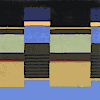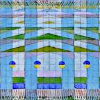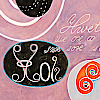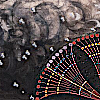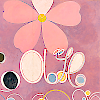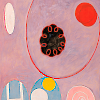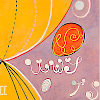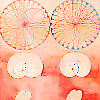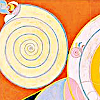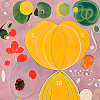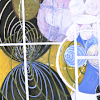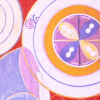[H]e saw a slender glittering warrior come forth from the door [...], who stood for a moment looking round about, and then came lightly and swiftly toward him; and lo! it was the Sun-beam, with a long hauberk over her kirtle falling below her knees, a helm on her head and plated shoes on her feet.
—William Morris, The Roots of the Mountains
Mentions of this book before I read it indicated to me that it was the inspiration behind several chunks of The Lord of the Rings for Tolkien, one of these being the "warrior women". There is a woman who swears herself to the war-god as a result of being disappointed in love, and some other echoes of Eowyn's story discussed in my previous post on the subject,
The romances of Morris's Roots of the Mountains as forerunners of those in LOTR. But saying that The Roots of the Mountains' fighting women inspired LOTR, though possibly true, is quite misleading, because there is so much
more warrior woman in
The Roots of the Mountains.
In
The Roots of the Mountains, Victorian socialist and medieval fanboy William Morris created a fantasy version of pre-Christian central european Gothic tribes in an idyllic egalitarian agrarian society where women hold political influence and freely fight in war against barbaric colonizing enslavers.
This fantasy society isn't closely based on any sources - the nearest is the bits of the poem
Hlöðskviða or "The Battle of the Goths and Huns" preserved
in a 13th century Icelandic "legendary saga" (fornaldarsaga) (ie not a historical saga; though the poem doubtless has its origin in some real poems/songs) - and while the image of the Germanic warrior woman or Valkyrie certainly exists in Norse and germanic folklore, Morris's world in ROTM goes far beyond that.
( Read more... )Of the three female main characters (out of five) in
The Roots of the Mountains, one is The World's Greatest Archer, typically a woodswoman and huntress, and a fierce fighting maiden all the time; one is a young athlete who was always skilled at fighting and makes a vow to go to war as a result of her broken heart, but throws herself gloriously into the fighting as a leader of the people; and one is a wise political leader who refuses to take up arms herself, but goes into the battle in full armor with her people.
‘And when I go down to the battle,’ said he, ‘shalt thou be sorry for our sundering?’
She said: ‘There shall be no sundering; I shall wend with thee.’
Said he: ‘And if I were slain in the battle, would’st thou lament me?’
‘Thou shalt not be slain,’ she said.
There are still plenty of women who don't go to battle in The Roots of the Mountains, too, and their choice is valid! But the ability to fight and the will to fight are fully accepted and fairly widespread for women throughout the four societies he portrays, (1) the Burgdalers (town dwellers), (2) the shepherds, (3) the woodsfolk, and (4) the Children of the Wolf, who have been living hidden in Mirkwood, the forest which lies between the dalesmen and the eastern invaders, and protecting the border from their SECRET BASE in the hidden Shadowy Vale.
First we learn of the fighting women of the Children of the Wolf - a mysterious, rather fantastical people, throwbacks to the heroic age, and thus possibly more apt to exotic things like warrior maidens:
Then the Sun-beam spake to Gold-mane softly, and told him how this song was made by a minstrel concerning a foray in the early days of their first abode in Shadowy Vale, and how in good sooth a maiden led the fray and was the captain of the warriors:
‘Erst,’ she said, ‘this was counted as a wonder; but now we are so few that it is no wonder though the women will do whatsoever they may.’
(In
The House of the Wolfings - that is, before the Wolfings came to the Shadowy Vale, and at least a couple of hundred years before ROTM - the army is made up mostly of men, but
( Read more... )) The Sun-beam's foster sister Bow-may intended from the first to fight, and takes the first opportunity to ask Face-of-god where he got his extremely good armor, and if she can have some:
( Read more... )But next we learn that the settled town-dwelling society of Burgdale, which at first seemed like a traditional early medieval setting, enthusiastically accepts the vow of the Bride to dedicate herself to the war god and fight in the battle for her people, and that many other young maidens are inspired to follow her example:
( Read more... )And finally when the fighters muster we see how many fighting women there are in the whole host: apparently eight, counting the Bride, out of 1 581 fighters from the Dale (Woodlanders and Folk of the Vine ie grape-growers); 50 women out of 235 Children of the Wolf. A sample of the muster scenes:
( Read more... )Of the female fighters, we later learn that another besides the Bride was injured, and Bow-May's hand gets hurt and her bow broken, but she keeps fighting. Morris also portrays them fighting heroically alongside the male warriors in his battle scenes:
( Read more... )
































